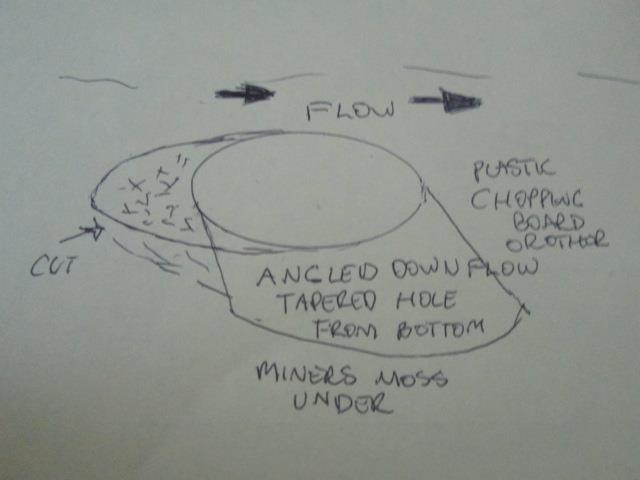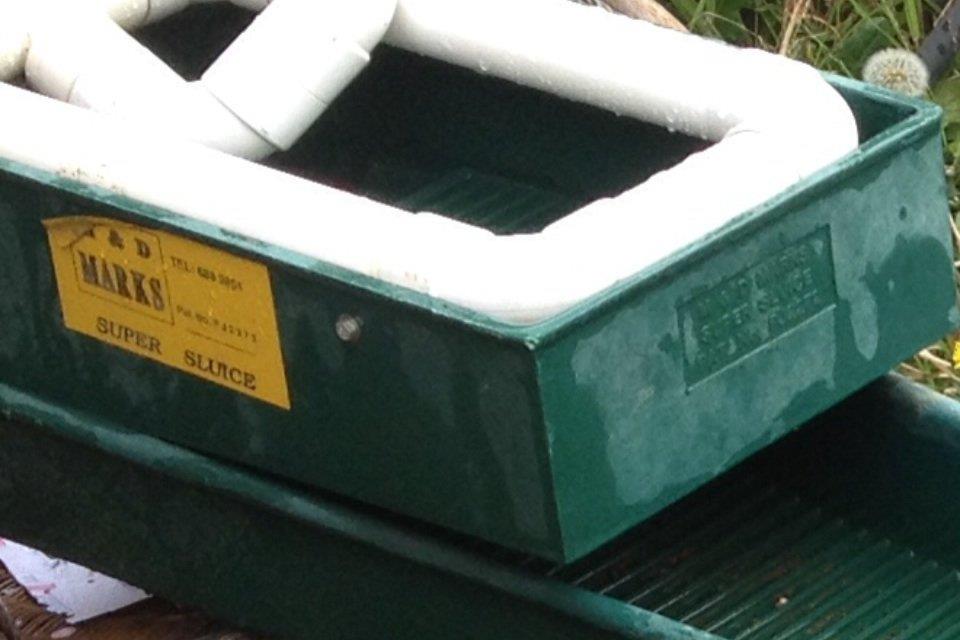It has been said that gold has a positive charge as per aluminium , so the heavy metal is repelled , fibreglass counteracts this claim and there is a fibreglass sluice out there in the market place but is expensive.
Making fibreglass products is a process that makes you think and work in reverse order. that is the finish coat called gel coat is applied to your mould, then a tie layer, a very fine fibreglass matting is applied to bond to the gelcoat, the rest of the body is built up using laminating resin and the right matting , would suggest plain matt matt and not chopped strand matt, for the reason its easier to poke into the shape of the ripple design, when you have built up the desired thickness then its time to apply the flow coat , wax in styrene, this hardens to the dry finish. now you can release the finished product from the mould , you would need to slide it out sideways. Back to mould construction, needs to be very smooth as the surface reflects the outer surface of your product , needs to be thoroughly waxed with wax to act as a release agent so the gel coat don't stick to the wooden mould. last time i bought flow coat it cost $35 for a litre can , glass matt is not cheap surfboard makers don't give away the offcuts and there may be a price attached, MEKP $6, laminating resin is about $30 litre, mixing sticks ice cream container paint brushes and acetone. so the process follows specific measurements and is not cheap, what is good is the glass dries in about half and hour and requires heat to set it off either by chemical reaction or with a heat lamp. side dags can be trimmed off with a sharp knife in what the call green trim state, in-between half dry and dry
I learned the basics by doing a reinforced plastics course at Tafe when it was available , a handy skill to have today. Perhaps I might still make a couple when I decide on the riffle design mould material will be polystyrene but that has as an issue with reacting with chemicals so a pvc coat needs to be applied to stop this or use a new material that is compatible with polystyrene , I coat poly profile moulds used in exterior building profiles but used a polyurethane resin with sand, just gets hard, to much thinking backwards, found it easier to buy 2nd hand wall banker





